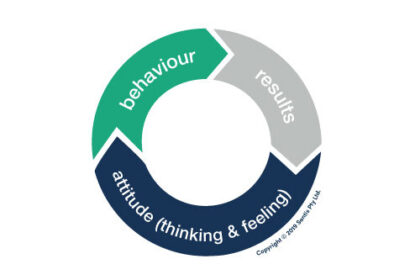SAFETY CULTURE, CLIMATE AND COMMUNICATION
A recent Sentis study was accepted for presentation by the Society for Industrial and Organisational Psychology (SIOP) exploring how safety climate and error management practices in healthcare influences the quality of safety communication. In this article we discuss the interaction of safety culture, climate and communication and the impact it has on ‘doing no harm’ in the healthcare industry.
Patient safety is front of mind in the healthcare industry, not least because hospital employees can contribute directly to serious outcomes as a result of violations, lapses and errors (Hofmann & Mark, 2006). The Institute of Medicine’s (IOM) landmark report on the state of patient safety, published nearly two decades ago, estimated that over 98,000 people die annually in the United States due to adverse medical events in healthcare settings (IOM, 2000).
Australian figures paint a similar picture. Between 2003 and 2004, over 67,000 patients experienced one or more adverse events during their stay in Victorian hospitals, adding more than $6,500 in average costs per event, and increasing the risk of in-hospital death seven-fold (Ehsani et al., 2008).
These figures paint a sobering picture for patient safety in healthcare, and are in stark contrast to the cultural undercurrent of ‘do no harm’ that is passionately lived each day by thousands of healthcare workers. So how can patient safety outcomes be so dire when it is clear that the provision of high quality care is such an important value shared by many employees in this sector? It certainly isn’t intentional, and part of the answer lies in the social context in which healthcare takes place.
Safety culture
Safety culture is one of the most diverse concepts in safety science. It has been defined in hundreds of ways, which differ both within and between industries. In healthcare, it is labelled ‘patient safety culture’ and is defined broadly to include values, attitudes, perceptions, skills and patterns of behaviour, which combine to produce the style and proficiency of health and safety management (from the Agency for Healthcare Research & Quality).
Practically, these patient safety culture components can be grouped together into seven distinct areas (Sammer et al., 2010):
- Leadership
- Teamwork
- Evidence-based practice
- High quality communication
- Learning from mistakes and errors
- Justice and fairness
- A patient-centred approach.
At Sentis, our research conducted with a large provider in the aged and disability care sector highlights some of the gaps in patient safety culture. Specifically, we found that employees’ willingness to report and discuss errors, and the fairness of incident investigations were the least positive of all the safety culture dimensions measured.
These results highlight some of the implicit cultural themes that can impair safety in healthcare settings. Hierarchies and power differentials between groups of medical staff, silos between teams and departments due to subcultural differences, and differences in technical skills and language can all serve as barriers to achieving a positive patient safety culture. Uncovering these nuances through triangulated survey and interview methods is an important first step towards understanding how they relate to patient safety culture and how to improve any latent issues—cultural or otherwise.
Safety climate
If safety culture is the personality or ‘essence’ of how safety is managed by an organisation, then safety climate is the mood or atmosphere at a point in time. Safety climate is a snapshot of safety culture, so gives a window into how values, practices, policies and procedures are contributing to employees’ interpretations and behaviour.
Safety climate is more responsive to change than safety culture, and so is a useful leading indicator and measure of progress. Studies show that safety climate surveys can predict incidents for up to one year following the initial measurement (Payne et al., 2010).
In healthcare, patient safety climate has been defined and measured in many different ways (Colla et al., 2005). There are versions of patient safety climate tools to measure a raft of different contexts, ranging from hospital-wide to intensive care units. There are also climate tools that align with specific operational situations such as blood transfusions. Importantly, there is evidence to suggest that patient safety climate is changeable, with activities such as senior management walkarounds resulting in significantly improved climate scores (Thomas et al., 2005).
Measuring and modifying specific safety practices, especially those that convey a sense of management safety commitment, is a reliable way to improve patient safety climate, and over the long-term, safety culture. In turn, patient (and staff) safety and health outcomes should also improve.
Safety communication
Although high quality safety communication is important regardless of industry, in healthcare it is vital. Poor quality communication has been associated with 65% of adverse ‘sentinel’ medical events (Thomas et al., 2003). Breakdowns in communication both within and between healthcare teams reduce quality of care (Haig et al., 2006) and increase medical errors (Brock et al., 2012).But how does communication relate to these high stakes outcomes? At a tangible level, good quality safety communication increases safety behaviours, like compliance with procedures and going above and beyond (e.g. helping coworkers to do a job safely). This is because good communication builds trust and quality relationships, generating a form of ‘social currency’ that encourages coworkers to reciprocate with extra-role helping and improvement-related behaviours.Safety communication also increases employees’ knowledge of safety procedures and practices, and generates increased safety motivation. Both of these are the main precursors to safety behaviour (Griffin & Neal, 2000). Without safety communication, a positive patient safety culture cannot be achieved.
Putting it all together
A recent study we conducted that was accepted for presentation by the Society for Industrial and Organisational Psychology (SIOP) focuses on how safety climate and error management practices in healthcare influences the quality of safety communication (Casey, 2016).
Within a large aged care provider, we explored how safety climate could ‘boost’ or accentuate the relationship between willingness to talk about errors and safety communication. In other words, we explored how having a positive safety climate encourages healthcare employees to expand their error-related discussions to include safety-related topics, improving overall safety communication.
We found support for this prediction, with higher quality safety communication at sites that possessed a more positive safety climate and staff that were more willing to talk openly about mistakes at work.
Practically speaking, and given that we observed much variation in site safety climates and employees’ willingness to talk about errors, there are steps that healthcare organisations should take to improve patient safety. Ultimately, the key to unlocking change in patient safety culture is through the safety climate and specific leadership behaviours.
First, measuring the safety climate identifies specific practices, procedures, tools, and systems that could benefit from tweaking or an overhaul.
Second, making these changes and sticking to them will gradually change people’s perceptions of safety climate, and ultimately influence deeper values and beliefs, leading to changes in behaviour and the safety results they achieve. Although behaviour-change is our ultimate goal, it is important to address underlying beliefs, values and attitudes so that the change is sustainable.
Third, leaders are the key to initiating change in safety culture. Investing in safety leadership training produces direct and measurable change in safety climate, which over time, will permeate to change the underlying safety culture. Teams look to leaders when deciding what is valued, important etcetera—if leaders provide a consistent signal that safety is a priority, this will start to challenge and change the existing safety culture.
References
- Brock, D., Abu-Rish, E., Chiu, C-R., … Zierler, B. (2012). Interprofessional education in team communication: Working together to improve patient safety. Postgraduate Medicine, 89, 642-651.
- Casey, T. (2016). Examining relationships between safety climate, error management, and safety communication. Paper accepted for presentation at the 32nd Annual Conference of SIOP, Orlando, Florida.
- Colla, J., Bracken, A., Kinney, L. & Weeks, W. (2005). Measuring patient safety climate: A review of surveys. Quality & Safety in Healthcare, 14, 364-366.
- Ehsani, J., Jackson, T. & Duckett, S. (2006). The incidence and cost of adverse events in Victorian hospitals 2003-4. The Medical Journal of Australia, 184(11), 551-555.
- Griffin, M. & Neal, A. (2000). Perceptions of safety at work: A framework for linking safety climate to safety performance, knowledge, and motivation. Journal of Occupational Health Psychology, 5(3), 347-358.
- Haig, K., Sutton, S. & Whittington, J. (2006). SBAR: A shared mental model for improving communication between clinicians. Journal on Quality and Patient Safety, 32(3), 167-175.
- Hofmann, D. & Mark, B. (2006). An investigation of the relationship between safety climate and medication errors as well as other nurse and patient outcomes. Personnel Psychology, 59, 847-869.
- IOM. (2000). To err is human: Building a safer health system. National Academies Press: Washington DC.
- Payne, S., Bergman, M., Rodriquez, J., Beus, J. & Henning, J. (2010). Leading and lagging: Process safety climate-incident relationships at one year. Journal of Loss Prevention in the Process Industries, 23, 806-812.
- Sammer, C., Lykens, K., Singh, K., Mains, D. & Lackan, N. (2009). What is patient safety culture? A review of the literature. Journal of Nursing Scholarship, 42(2), 156-165.
- Thomas, E., Sexton, K., Neilands, T., Frankel, A. & Helmreich, R. (2005). The effect of executive walk rounds on nurse safety climate attitudes: A randomised trial of clinical units. BMC Health Services Research, 5(28), doi: 10.1186/1472-6963-5-28




